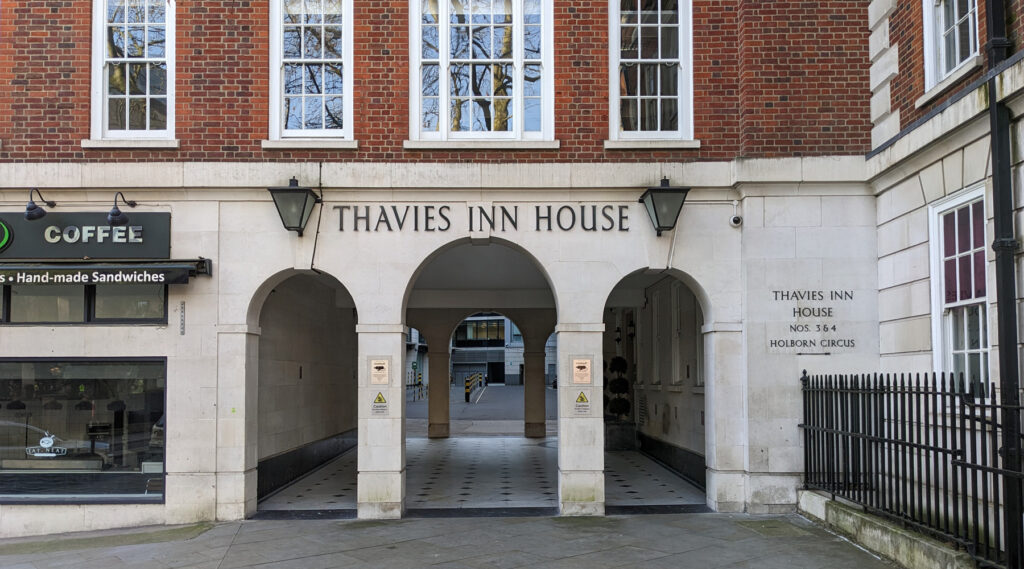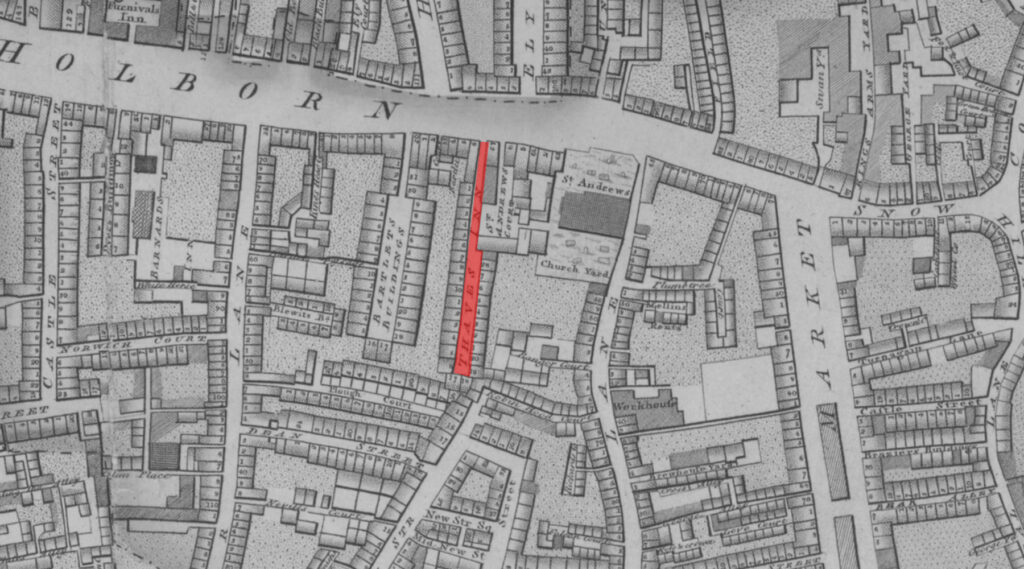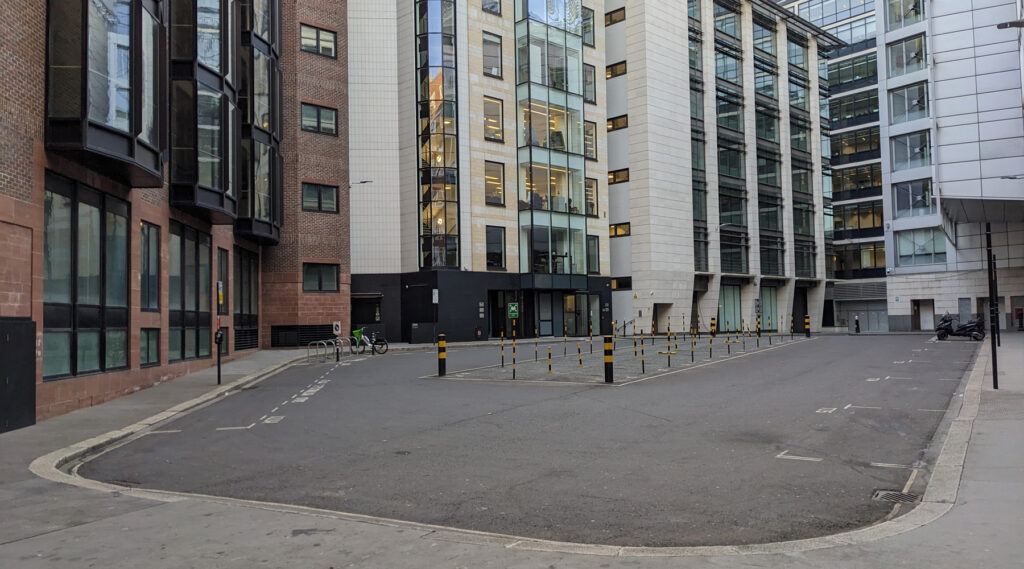This is a courtyard space hidden behind a fairly distinctive building at Holborn Circus, which will soon not be there.
The area is likely named after John Thavie, a local armour maker who lived in the area in the middle of thre 14th century. In his will, he left a considerable sum of money and land to the nearby church of St Andrews, and the charity set up by that bequest still exists today, as the St Andrew Church Foundation.
There is considerable confusion about the land, which may, or may not, have been let to lawyers, or fellow armour makers, but the name Thavie’s Inn seems to derive from that — the Inn of Chancery being the names given to the groups of lawyers practising in London. There is a counter theory that the area was later occupied by John Davy, a clerk, and Thavy could derive from Davy, as he was Welsh and D would have been pronounced as “th”.
Whatever the origins, a cluster of buildings known as Thavies Inn had appeared here by Tudor times.
Thavie’s Inn became associated with Lincoln’s Inn, but they sold it in 1785 for £4,100 to raise money to improve their own estate just down the road. The land shows up in R Horwood’s 1799 map as a row of buildings facing onto a single street.
The area was substantially changed with the building of Holborn Circus in the 1860s, and the nearby St Andrew’s Street. and while Thavie’s Inn was cut back, it still remained pretty much as it had always been, a narrow street surrounded by small buildings.
That all changed thanks to WWII, as pretty much the entire area south of the Holborn Circus was destroyed. The only thing to survive was the northernmost building, which is still there today as the brick-built block of offices called Thavie’s Inn House.
So, much of what you see around Thavie’s Inn is modern. Even Thavie’s Inn House was built in a minimum-Georgian style by Lewis Solomon, Son & Joseph in 1939, and was the only part of the estate to survive WWII relatively undamaged.
After the war, New Fetter Lane was created, along with the courtyard that makes up much of the back of Thavie’s Inn, and over the decades, a series of buildings to the south have been built, torn down and rebuilt again.
Now it’s the turn of the 1930s building, along with a 1950s extension to go as well, as planning permission now exists to remove it and replace it with a modern office. Before the howls of protest, the 1930s building was itself built as a modern office, so the cycle of London’s architecture carries on as it always has.
At the moment then, to enter Thavie’s Inn, it’s nicer to come in via the Holborn Circus end as you can walk through that 1930s cloister-style entrance with its marble floor and arched entrances, into the courtyard named after the road that used to be here.
Candidly, when you’re inside the courtyard, there’s not a huge amount here to interest people.
It’s now surrounded by several blocks of modern office buildings, of varying styles all around a tarmac covered parking space. It leads southwards to the road entrance, but one hint of interest can be found to the side, where a small passageway has been created through the base of one of the modern offices.
Down a set of steps, and in front of you is a blue glass piece of public art. The alley curves around and back out into the main road, but it’s technically a different alley and not part of Thavie’s Inn, so you’ll have to wait for another article to learn about the art and how it ended up here.











A shame. The facade of the 30s block, together with its scale, is far more pedestrian-friendly than anything today. Indeed the entire earea around New Fetter Lane – as rebuilt post-war – was interesting; pedestrainaised, mid rise brick-built blocks with the odd piece of sculpture. There was even a mechanical car park, complete with petrol station, turntable and so on, to service the area. Now it’s all gone for New street Square, much of which is cold, dominerring stuff.